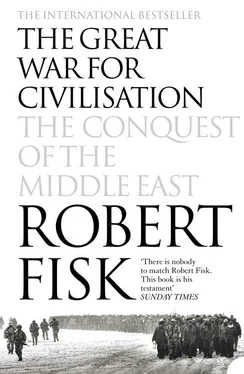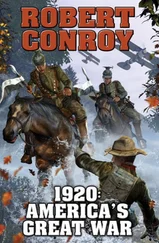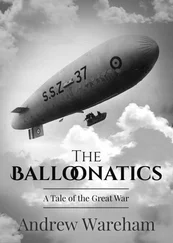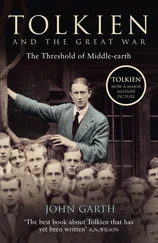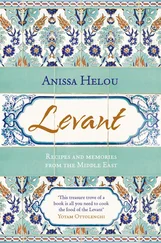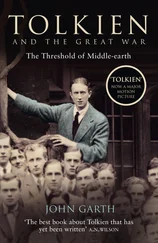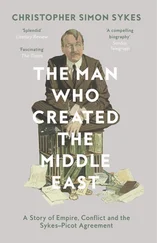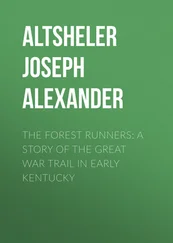Inevitably, the Iranians lost their patience with the foreign journalists in Tehran. The day after the ‘trial’ statement, Abolhassan Sadeq walked into the Iranian Ministry of Islamic Guidance with the troubled expression of a headmaster forced at last to deal with a persistently unruly class. Harvey Morris, shrouded in his usual smoke haze – mercifully for him, it was to be at least a decade before Iran would ban smoking in government buildings – knew what was coming. ‘Well, Fisky, we’ll see who’s going to get the order of the boot today,’ he murmured. The ministry contained an underground auditorium that looked uncomfortably like a school hall and there we waited to hear the worst. Sadeq, the school director, took his place at a desk on a small raised podium and stared down at us severely. We all knew that an expulsion or two was in the air.
‘Gentlemen,’ he began – Harvey always liked the ‘gentlemen’ bit – ‘I want to share with you a bit of agony we are going through with regard to the foreign media. With great displeasure, we are expelling the entire Time magazine crew from Iran.’ It mattered little that the ‘entire’ staff of Time in the country numbered just two. This was not how Sadeq saw things. There were over three hundred foreign journalists in Iran from more than thirty countries, he said, but Time had gone too far. He flourished a clutch of front covers from the offending organ, one of which carried an unflattering portrait of Khomeini.
‘Since the problem of hostages came up,’ Sadeq said, waving the latest issue of Time in his hand, ‘this has done nothing but arouse the hatred of the American people. The front covers have been like a hammer on the brain. The magazine has created some very irrational reaction on behalf of the American people.’ Time was not the only news organisation to feel Iranian wrath. Eight days earlier, Alex Eftyvoulos, a correspondent for the Associated Press – a bearded part-Russian Cypriot who looked like Rasputin – had been expelled for allegedly distorting news of rioting in the Azerbaijani provincial capital of Tabriz. Even the British had fallen foul of Iranian anger. In early December, Enayat Ettehad of Iranian television had been watching BBC News in a London hotel and was angered by a report on the hostages in which Keith Graves described in unpleasant detail how their hands were bound with rope and how they were forbidden to speak to each other or receive news from the outside world. I wasn’t surprised. Over the next two and a half decades, Graves would infuriate the Taliban, the Israeli army, the US government, the IRA, the British army, NATO, the Egyptians, the PLO, the Hizballah, the Syrians, the Turks and even the Cypriots – the latter an astonishing achievement even for a man of Graves’s abrasiveness – and survive them all. But the BBC was made to pay for it. Ettehad instructed Iranian television to refuse BBC crews any further use of satellite facilities. The BBC was forced to ship all their film unprocessed by air to London, where it usually arrived a day late. It was clear, however, that Ettehad was far more upset by the BBC’s Persian language radio service, and Sadeq brandished a sheaf of papers above his head – complaints, he said, about the Persian service from ‘all over Iran’.
Sadeq was confident about his broadsides. He loudly referred to the fact that one of the two Time correspondents had once worked for the CIA. ‘Yet still I let him into Iran.’ He was referring to Bruce van Voorst, who worked as a CIA research officer in the late 1950s but who now said that he had severed all links with the agency – whose own activities in the country were now, thanks to the embassy documents, a national Iranian obsession. The American CBS network was in trouble for comparing the students in the embassy to the German Baader-Meinhof gang, the ABC network for a State Department analysis ‘that would make any Iranian look like an idiot’. But there was a pettiness about the government’s response to overseas coverage, a gut reaction that sprang from patriotic anger rather than forethought. Sadeq, who in argument was given to drawing unhappy parallels with events in American history, unconsciously revealed this when he reminded us that ‘in 1834, Colonel Travis defended the Alamo against the Mexican army and when he was told to surrender he replied with gunfire. He stood up for his principles. And that is what Iran is doing today.’ I heard Harvey Morris sigh. ‘Good God!’ he exclaimed. ‘I thought Travis lost the battle of the bloody Alamo.’
The revolution was a tempest and we were all trapped in its vortex. We interviewed Khomeini, we watched the epic demonstrations, we watched America writhing in impotence. US warships entered the Gulf. Khomeini called for an army of tens of thousands of schoolboy volunteers to defend Iran. I travelled back from Iranian Kurdistan on a bus whose passengers spent an hour watching a weapons education programme on the coach’s specially installed television: how to strip and reassemble an automatic rifle, how to pull a grenade pin, how to master the mechanism of a heavy machine gun. I swayed at the back of the fast-moving bus as the audience sat in silent attention. And today, I thought, we have naming of parts.
But I was seeking some other way of reporting Iran, away from the events which were so obstinately staged for our benefit, especially for American television reporters. I was in Harvey’s office, staring at the stained map of Iran on his wall, when I had an idea. What if I closed my eyes and stuck a pin into the map and then travelled to the point I had marked and asked the people there about the revolution? ‘Close your eyes and I’ll give you a pin,’ Harvey announced. ‘And I bet you stick it in bloody Afghanistan.’ He produced the pin, I closed my eyes, stabbed at the map and then opened my eyes again. The little sliver of silver had landed in the ‘h’ of a village called Kahak, south-west of the city of Qazvin. I set off at dawn next morning.
Kahak was the sort of place no one ever goes to visit. It lay, a rectangle of mud and clay single-storey houses, at the end of a dirt road with only a gaggle of children and a dung-heap picked over by fat chickens to welcome a stranger. Through the dust and the heat haze to the north, the Alborz mountains ran along the horizon, forming the lower lip of the Caspian Sea basin. Foreigners never saw Kahak, except perhaps the passengers on the night train to the Soviet frontier as it skirted the village orchards. Even then, it was doubtful if they would notice anything. Kahak was so small that its 950 inhabitants could not even support a mosque of their own.
A prematurely ageing man of sixty-four with a slick of perspiration running down his face from beneath his turban and a shirt front covered in dirt had to travel up from Qom to minister to the faithful. But he was a man capable of extraordinary energy as he walked nimbly around the heaps of manure and puddles of gilded, foetid water, talking about the village in a possessive, slightly rhetorical, almost sermonising way, his voice rising and falling in the cadences of a formal speech rather than a conversation. What had the revolution done for these people, I asked, and Sheikh Ibrahim Zaude pointed to the hard, unwatered land beyond the mud huts, a desert of grey, unyielding earth.
‘The villagers own everything on both sides of the road,’ he said. ‘But they do not know how much land they have.’ The heat shimmered and danced on the dried-up irrigation ditches: there were no deeds of ownership, no papers and no legal covenants in Kahak now that the landlords had gone. Just when the landlords did depart was something that bothered Sheikh Zaude. ‘In the past regime,’ he explained, ‘there were two big landowners – Habib Sardai and Ibrahim Solehi. The villagers lived in very bad conditions. Some of them were so poor that they owed many debts but Sardai and Solehi came here and took their grain in payment. I remember seeing these villagers going to other villages to buy back their own grain at high prices. So the people had to borrow money for this and then pay interest on the loans.’ More than a dozen villagers gathered round me as Sheikh Zaude talked on. They were poor people, most of them Turkish in origin with high, shiny cheekbones. Their grey jackets were torn and their trousers frayed where the rubble and thorns in the fields had scratched them. They wore cheap plastic sandals. There was only one girl with them, a thirteen-year-old with dark hair who had wrapped herself shroud-like in a pink and grey chador.
Читать дальше
